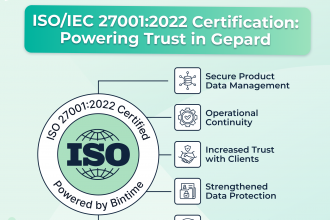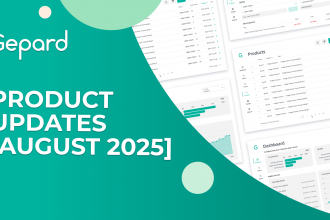The Future Of Healthcare eCommerce: PIM Strategies for Success
Healthcare eCommerce is booming, with the healthcare ecommerce market projected to reach a staggering USD 1.03 trillion by 2029, growing at an impressive CAGR of 18.70%. People are increasingly turning to the internet for health and wellness products, from everyday medications to specialized medical devices.
This shift towards digital healthcare solutions presents an incredible opportunity for businesses in the industry. But with such a possibility lies the challenge of dealing with a vast and complex web of product information. And that’s the moment for Product Information Management (PIM) to take its part.
What is a Healthcare Ecommerce?
Current Trends in Health and Wellness eCommerce

Healthcare eCommerce is constantly changing, adapting to new technologies and consumer demands. Let’s talk about some of the latest retail healthcare trends shaping the market.
#1. Telemedicine Integration
?Interesting Stats: Virtual consultations are becoming increasingly common, with the telemedicine market projected to skyrocket to USD 57 billion by 2034.
Healthcare eCommerce platforms are integrating telemedicine features, allowing patients to consult with healthcare professionals remotely. This trend is fueled by a growing patient demand for convenient access to healthcare, advancements in telecom infrastructure and smartphone usage, and the lasting impact of the COVID-19 pandemic.
The combination of EHR vendor solutions with telecare platforms is streamlining patient records administration and increasing remote consultations, enhancing care coordination and patient satisfaction. Using the best EHR for small practices simplifies this process.
#2. Personalized Health Products
?Interesting Stats: From customized vitamin packs to DNA-based skincare routines, personalized healthcare products are on the rise, fueling a market expected to reach over USD 1,233.23 billion by 2033.
eCommerce platforms are leveraging data and AI to offer tailored recommendations and products, tapping into the growing demand for healthcare solutions that adapt to individual needs and preferences. This trend is particularly strong in the personalized nutrition and wellness segment, which currently dominates the market.
#3. Subscription-Based Models
From monthly medication refills to curated wellness boxes, subscription-based models are gaining popularity in healthcare eCommerce. They offer efficiencies and cost savings for customers.
?Interesting Stats: Recent research highlights the potential of subscription offerings as a growth engine for businesses, providing a steady revenue stream and increased customer engagement.
While traditionally associated with industries like media and telecommunications, subscription models are now making inroads into product-centric sectors, including healthcare.
#4. Sustainability and Ethical Consumerism
Today’s customers are becoming more conscious of the environmental and social impact of their purchases. Healthcare eCommerce businesses are responding by offering eco-friendly and ethically sourced products.
?Interesting Stats: This trend is reflected in advertising spending, with sustainability-related ad expenditures reaching hundreds of millions of euros in Germany alone between January 2022 and May 2023.
Buyers are looking for options that line up with their values, and healthcare companies are taking note.
#5. Mobile Commerce and Health Apps
With smartphones being an essential part of our lives, mobile commerce and health apps are transforming the way we manage our health. These apps, often developed through specialized mobile healthcare app development process, offer features like medication reminders, fitness tracking, and remote monitoring.
?Interesting Stats: The mHealth market, including these apps and services, is projected to reach a staggering USD 187.7 billion by 2032, underscoring their growing importance in the healthcare landscape.
The widespread adoption of smartphones has significantly contributed to this growth, providing convenient healthcare access for people worldwide. Within this market, mHealth apps, especially those focused on medical needs and fitness, are leading the charge in healthcare innovation.
#6. Wearable Technology Integration
From smartwatches that check your heart rate to fitness trackers that count steps, wearable technology is revolutionizing the way we track and manage our health. Healthcare eCommerce businesses are integrating these devices into their platforms, offering seamless data tracking and personalized health insights.
?Interesting Stats: The wearable technology industry is expected to experience substantial growth, reaching a projected revenue of USD 173.0 billion by 2030, demonstrating its increasing importance in the healthcare landscape.
#7. Growth of Direct-to-Consumer (DTC) Brands
DTC brands are bypassing traditional retail channels and selling directly to consumers online. This trend is disrupting the healthcare industry, offering consumers greater access to innovative and affordable products.
?Interesting Stats: The direct-to-consumer (DTC) wellness testing market is a prime example of this disruption, with the U.S. market alone projected to reach USD 4,946.3 million by 2032.
This rise is fueled by increasing people’s awareness of personalized health, advancements in genetic testing technologies, and a growing emphasis on preventive healthcare. DTC brands empower consumers to take control of their health, offering convenient at-home testing kits and personalized health insights.
#8. Enhanced Focus on Mental Wellness
Mental health is finally getting the recognition it deserves. Healthcare eCommerce platforms are expanding their offerings to include mental wellness products and services, from meditation apps to online therapy platforms.
?Interesting Stats: This trend is reflected in the rising popularity of wellness apps, which generated USD 950 million in revenue in 2023.
These apps offer tools for stress reduction, burnout prevention, and sleep improvement, catering to the increasing demand for accessible mental health support.
The Role of PIM in Healthcare eCommerce
Imagine trying to manage thousands of product descriptions, images, technical specifications, and regulatory compliance documents in a messy spreadsheet. It’s a recipe for disaster. PIM, or Product Information Management, is the solution — especially when integrated with an AI video generator to effortlessly create dynamic product videos from your data.
PIM acts as a centralized hub, consolidating all your product data into a single source of truth. It means that every bit of information, from product descriptions to compliance certificates, is accurate, consistent, and readily available across all your sales channels—your website, mobile apps, marketplaces, and even printed catalogs. Efficient product catalog enrichment for the healthcare supply chain is essential in this context.
In the world of healthcare eCommerce, where everything moves quickly and regulations are strict, PIM is more than just a convenience. It’s one of the key ecommerce solutions for healthcare industry, and it empowers you to:
- Maintain data accuracy: Eliminate errors and inconsistencies that can lead to costly product recalls, customer dissatisfaction, and compliance issues.
- Streamline product launches: Accelerate time-to-market by efficiently managing product data and ensuring it’s ready for distribution across all channels.
- Enhance the customer experience: Provide rich, detailed product information that allows customers to make smart purchasing decisions.
- Ensure regulatory compliance: Stay ahead of evolving regulations and maintain accurate, up-to-date product data to avoid penalties and reputational damage.
- Optimize for omnichannel selling: Deliver a consistent and compelling product experience across all your sales channels, from your website to eBay Health and beyond.
So, PIM transforms the way you manage product information, helping you to focus on what truly matters: delivering top-notch healthcare supplies and services to your customers. For manufacturers in the healthcare industry, a robust PIM solution like Gepard PIM for manufacturers can be a game-changer, revolutionizing PIM healthcare and PIM healthcare manufacturing processes.
The Future of Healthcare eCommerce
Healthcare eCommerce is poised for even more exciting developments in the coming years. Emerging technologies like AI, ML, IoT, and blockchain are set to revolutionize the industry. AI-powered chatbots could provide personalized health recommendations, while IoT devices could enable remote patient monitoring. And blockchain could enhance the security and transparency of healthcare data. The rise of D2C health marketing further emphasizes the need for efficient product information management in this evolving landscape.
To stay ahead of the curve, businesses need to embrace innovation and continuously adapt their eCommerce strategies. A well-designed PIM system is essential for navigating the complexities of healthcare eCommerce and ensuring long-term success.
Final Thought
Healthcare eCommerce is the future of the industry. It offers convenience, accessibility, and personalization that traditional retail simply can’t match. But to succeed in this competitive landscape, businesses need to take advantage of the power of PIM. By centralizing and streamlining product information management, PIM empowers businesses to deliver exceptional customer experiences and drive growth.
Ready to take your healthcare eCommerce business to the next level? Schedule a free demo with a Gepard eCommerce expert and discover how our PIM solution can help you optimize your product information management processes.




